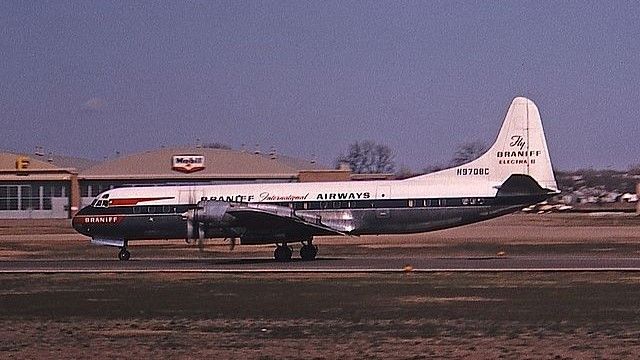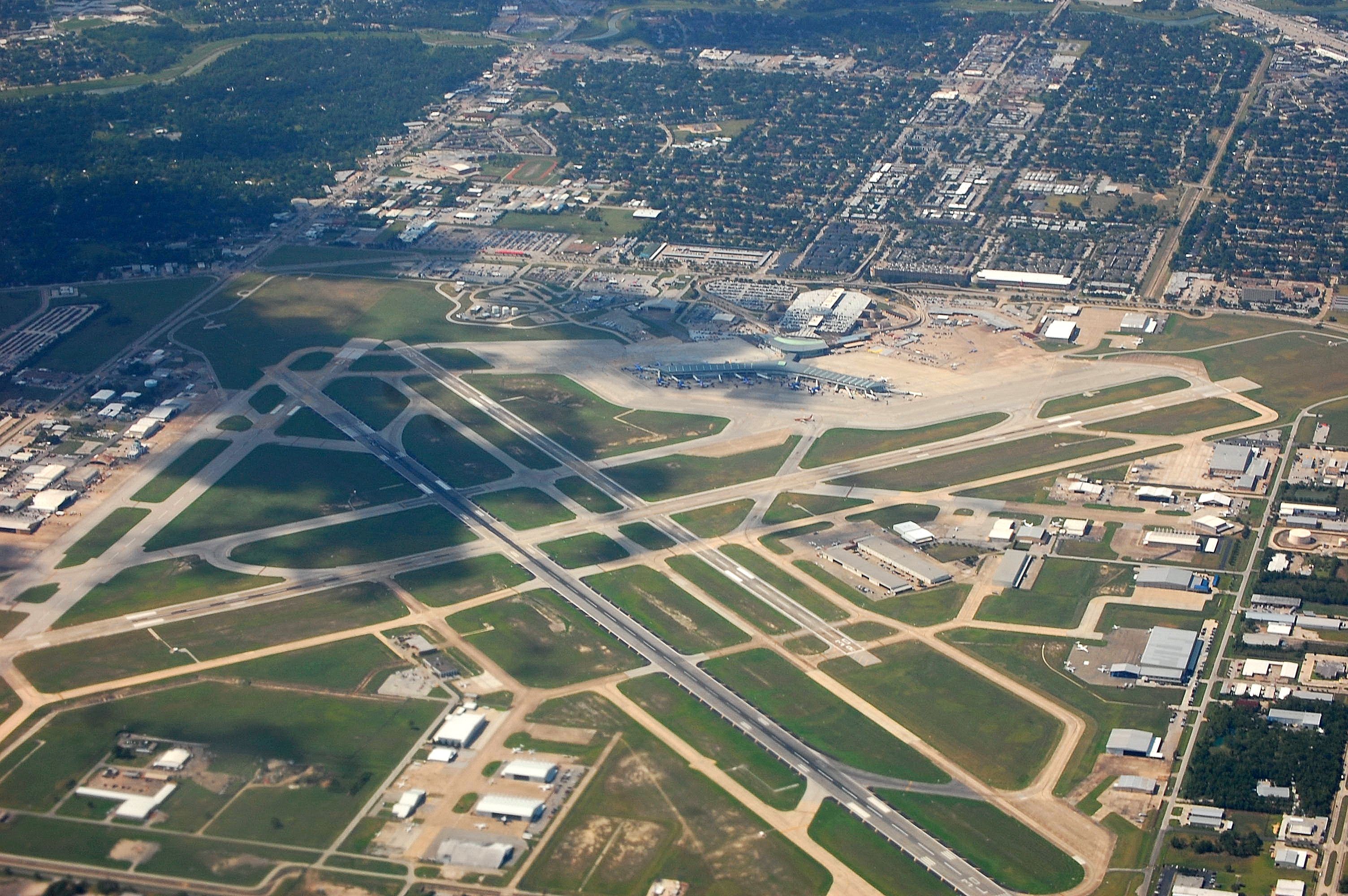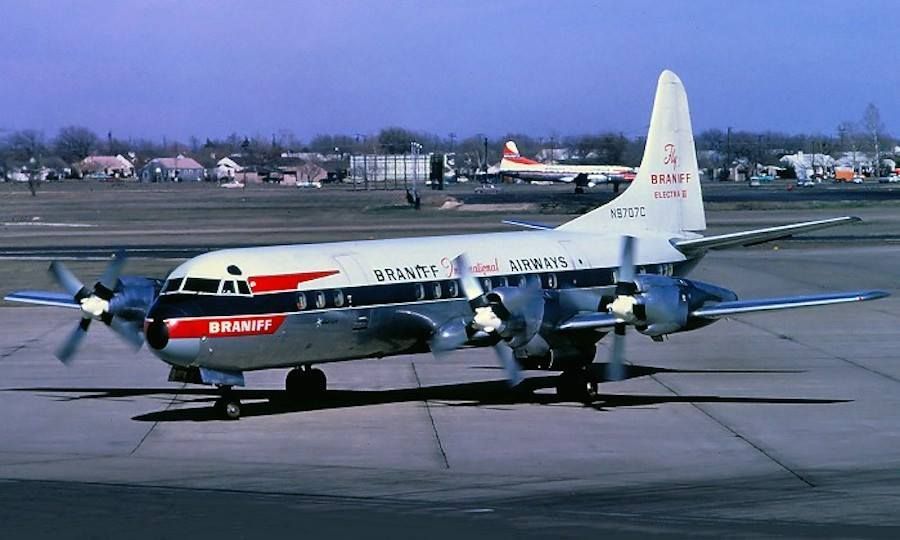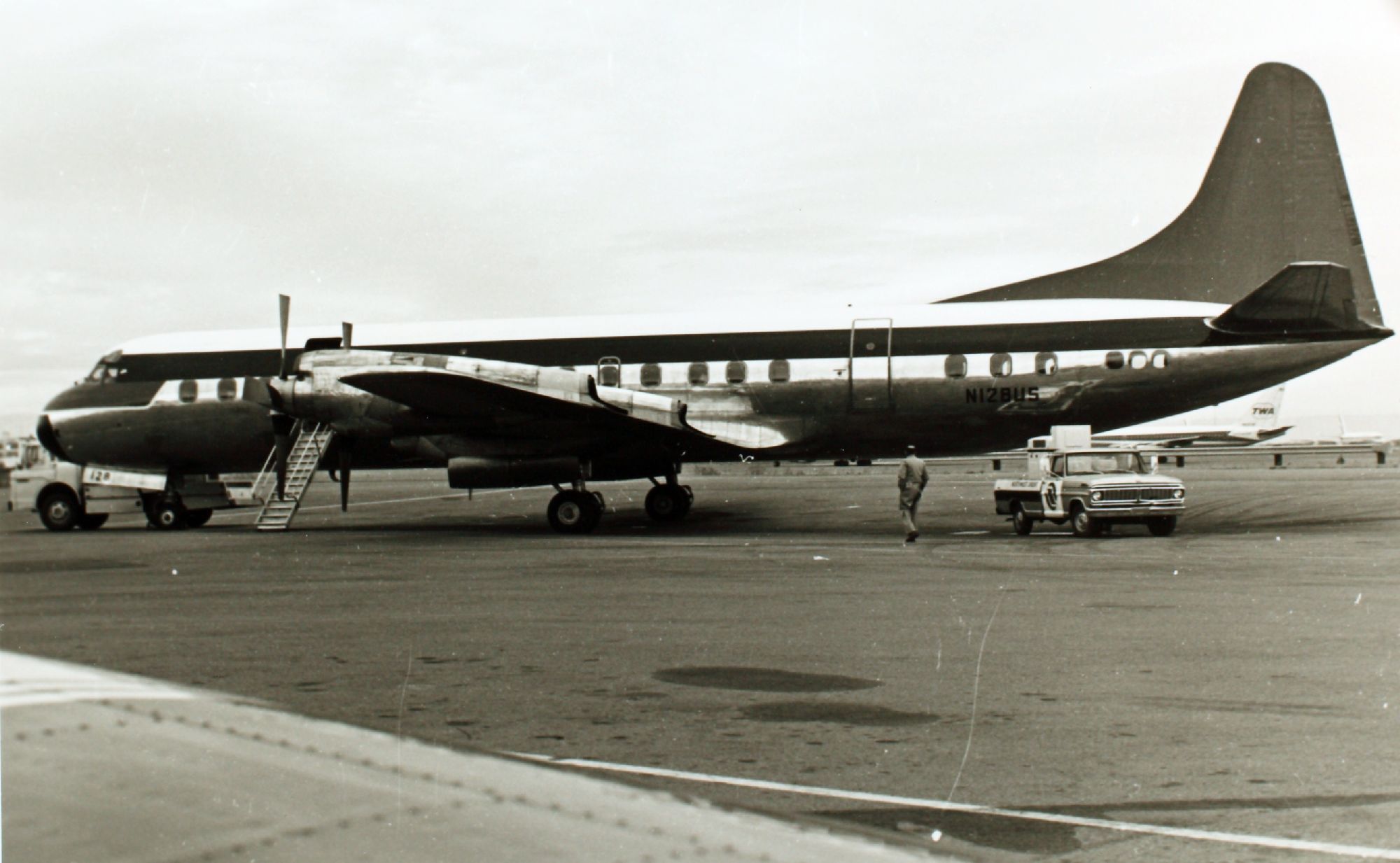Summary
- Braniff Flight 542 crashed near Buffalo, Texas, in September 1959, killing all 34 people onboard.
- The investigation pointed to structural failure of the left wing as the probable cause of the accident.
- Investigations spanned nearly two years, with other examples of the type being involved in accidents and incidents during that period.
On September 29th, 1959, a Braniff AirwaysLockheed Electra, Model L-188A, crashed about 3.19 miles east-southeast of Buffalo, Texas, killing all 34 people onboard. The aircraft involved in the tragedy was brand new, leaving investigators with many questions about the probable cause. It disintegrated mid-flight and was further destroyed by ground impact and the post-crash fire. Let us take a look at the events that transpired on the day.
A regular flight from Houston to New York
Braniff International Airways Flight 542 was a scheduled passenger flight from Houston to New York International Airport (JFK), with stops in Dallas and Washington, DC. The flight left the ramp at Houstonat 22:37, about 22 minutes behind schedule. The delay was caused by a mechanical issue with the number three generator, which was inoperative when the aircraft landed in Houston.
The 34 people onboard included one company employee, six crew members, and 27 passengers. The crew consisted of the following individuals:
- Captain: Wilson Elza Stone
- First officer: Dan Hollowell
- Second officer: Roland Longhill
- Cabin crew: Alvilyn Harrison, Betty Rusch, Leona Winkler
The first leg of the flight was estimated to take about 41 minutes. Flight 542 was cleared for takeoff at approximately 22:40 and departed Houston at 22:44. Once the plane was airborne, Houston control handed it over to San Antonio. At about 22:52, the crew reported to San Antonio Center that it was flying over the Gulf Coast intersection at an altitude of 9,000 ft.
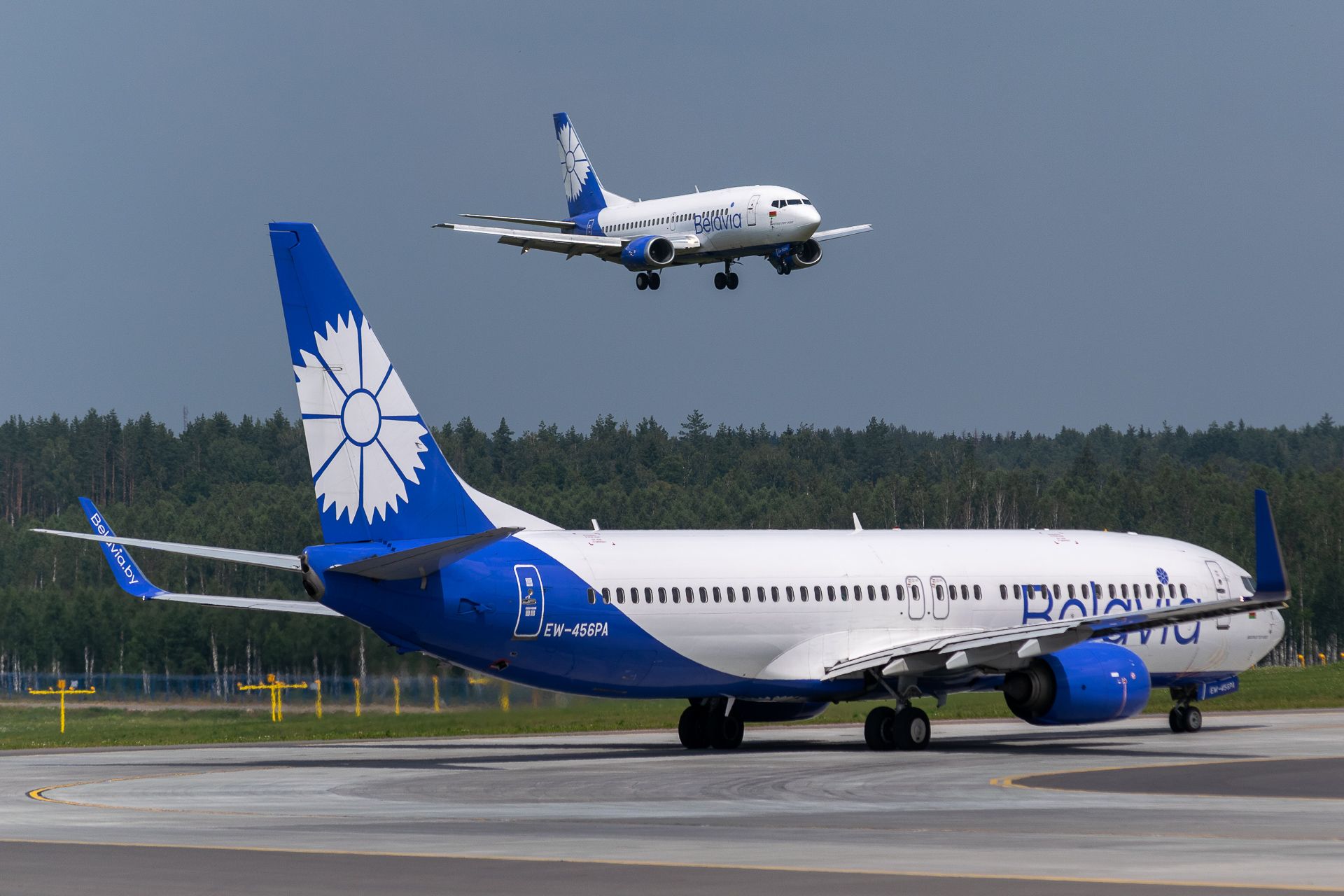
During Which Flight Stages Do Most Accidents Occur?
Environmental aspects and ground proximity increase the risk of accidents.The flight was cleared to climb to 15,000 ft, and about six minutes later, it reported passing the Leona Omnidirectional Navigation Radio (omni). Then, via the Braniff company radio, the crew said maintenance would be required on the number three generator, believing it had not been sufficiently insulated in Houston. This was the final transmission from the crew and was logged as complete at 23:07.
Structural failure of the Electra
Structural failure of the Lockheed Electra is believed to have occurred around 23:09 when the flight was en route to the next fix - Trinidad intersection. The left wing and number one (left outboard) engine separated from the plane. Pieces of the broken wing then struck and dislodged the horizontal stabilizer. The aircraft's right wing then broke away, causing structural damage to the fuselage and the midair breakup.
Those passengers and crew who were not killed during the initial breakup of the plane were either ejected from the aircraft or trapped within it as it fell out of the sky.According to documents from the FAA, the main wreckage was found 19.7 miles north of Leona Omni and 3.19 miles east-southeast of Buffalo, Texas. Through information submitted by witnesses and the time indicated on impact-stopped watches, investigators could determine the time of the crash.
The wreckage was distributed within a long, narrow ellipse, with the major axis coinciding with the 344-degree radial of Leona omni. The wreckage covered a total distance of 13,900 ft from the first recovered item to the nose crater. The tail section was found about 250 ft northwest of the center section, with the rudder and elevator control cables stuck on the intervening tree tops.
The Lockheed Electra involved in the accident had registration N9705C. It was a brand-new aircraft, with its final assembly starting in April 1959. It completed its first test flight on September 4th and was delivered to Braniff International Airways on September 18th, 1959, 11 days before the accident. The four propellers and engines two, three, and four were installed new, with zero hours on the clock. However, engine one had accumulated 26 hours and 25 minutes at the time of installation.
Love aviation history? Discover more of our stories here
A long and complicated investigation
Civil aviation investigators arrived at the crash site the following day and found the left wing a mile away from the wreckage in the potato field. It was soon evident that the series of events had begun with the left wing, but they could not figure out how it had happened. Engineers at NASA, Boeing, Convair, and the FAA also failed to determine what caused the wing to break off.
The investigation took nearly two years to complete, with investigators exploring countless avenues to determine the probable cause. During that period, other Electraswere involved in several accidents and incidents, which were also thoroughly investigated.
Now dumbfounded about the cause, interest in the case stalled for six months until March 17th, 1960, when an Electra belonging to Northwest Orient Airlines was involved in an accident at Connelton, Indiana. Civil Aeronautics Board (CAB) Chief Safety Investigator Phillip Goldstein was reported as saying:
"The structure was subjected to forces greater than it was designed for. We have definite evidence of a wing failure. Why this wing failure occurred, I don't know."
Again,investigators scratched their heads to find an answerand finally concluded that the plane's wings were too stiff. Vibrations in the wing and harmonic coupling caused increased vibrations until a part of the structure eventually failed.
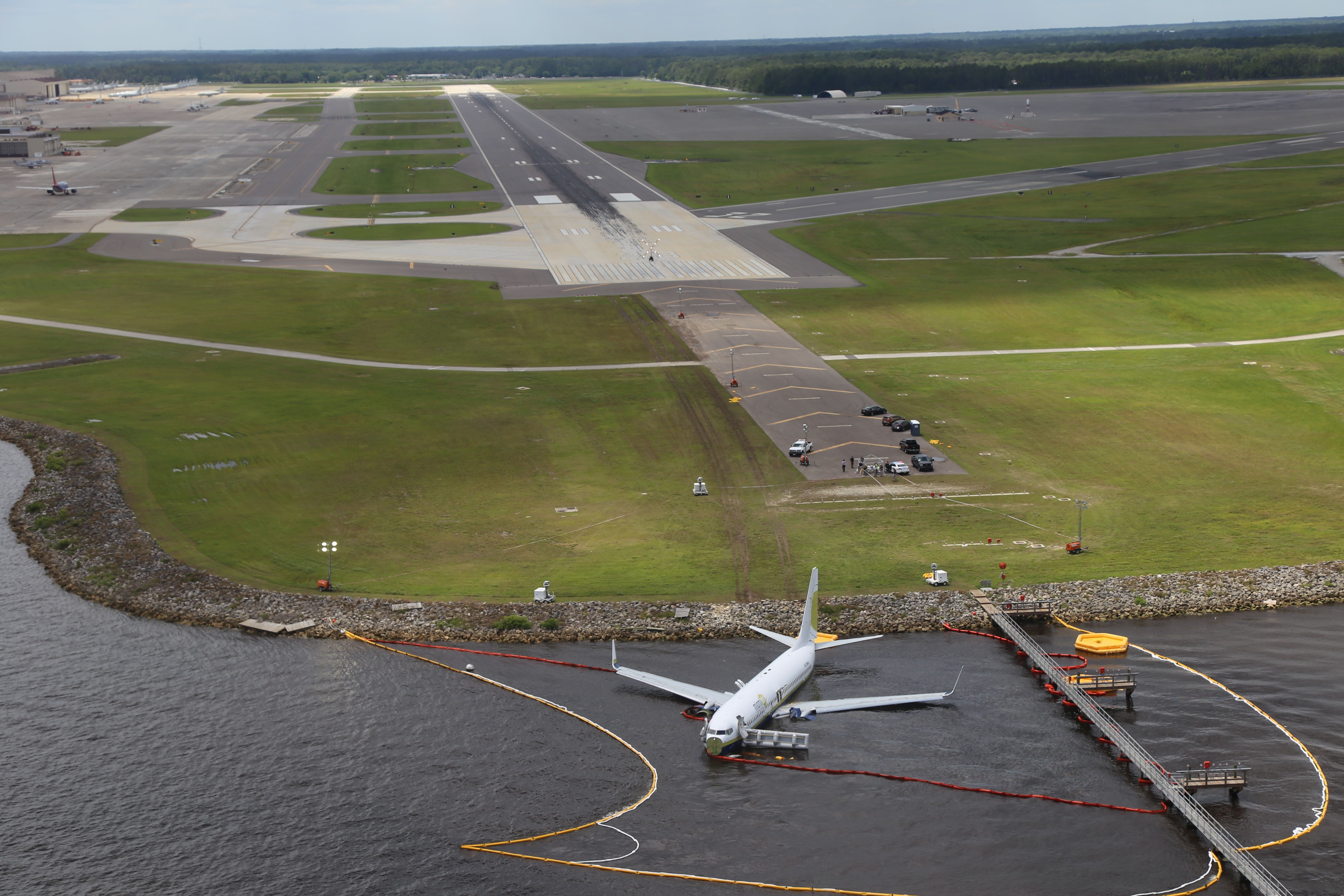
Air Crash Investigations: What Do They Entail?
Air crash investigation is a complex and lengthy process.The investigation's conclusion
Throughout the investigation, investigators could not find a positive indication of the cause. However, in the final report, an attempt was made to eliminate certain possibilities by applying the available data to them. Once these were eliminated, the remaining casual factor with some known basis was the condition of whirl mode.
The probability that this was the cause of the accident is supported by the following:
- The aircraft was flying level and straight without any serious mechanical problems.
- A supersonic or high-speed propeller sound occurred about 30 seconds before the wing failed.
- Evidence of structural damage was compatible with the oscillatory motion of the number one engine and the left wing.
- The number one engine's first-stage compressor blades rubbed the air inlet housing supports.
- The Northwest Orient Airlines crash helped determine the probable cause.
After a thorough investigation and consideration of various factors, the Civil Aeronautics Board determined that structural failure was the probable cause of the accident. Specifically, the investigation concluded that the left wing's failure resulted from undampened propeller forces, according to theAviation Safety Network.
Do you remember Braniff Airways Flight 542's crash? Have you flown in a Lockheed Electra before? Please share your thoughts and experiences in the comments!

